Astronomers observed a cosmic weather event that has never been seen before, on a supermassive black hole.
An international team of astronomers using the Atacama Large Millimeter/ submillimeter Array (ALMA) has witnessed a cosmic weather event that has never been seen before. A cluster of towering intergalactic gas clouds raining in on the supermassive black hole at the centre of a huge galaxy, one billion light-years from Earth.
Above, the cosmic weather report, as illustrated in this artist’s concept, calls for condensing clouds of cold molecular gas around the Abell 2597 Brightest Cluster Galaxy. The clouds condense out of the hot, ionised gas that suffuses the space between the galaxies in this cluster. Credit: NRAO/AUI/NSF; Dana Berry/SkyWorks; ALMA (ESO/NAOJ/NRAO)
The new ALMA observation is the first direct evidence that cold dense clouds can coalesce out of hot intergalactic gas and plunge into the heart of a galaxy to feed its central supermassive black hole. It also reshapes astronomers’ views on how supermassive black holes feed, in a process known as accretion.
Previously, astronomers believed that, in the largest galaxies, supermassive black holes fed on a slow and steady diet of hot ionised gas from the galaxy’s halo. The new ALMA observations show that, when the intergalactic weather conditions are right, black holes can also gorge on a clumpy, chaotic downpour of giant clouds of very cold molecular gas.
Grant Tremblay, an astronomer with Yale University in New Haven, Connecticut, USA, former ESO Fellow, and lead author on the new paper, said:
“Although it has been a major theoretical prediction in recent years, this is one of the first unambiguous pieces of observational evidence for a chaotic, cold rain feeding a supermassive black hole.
It’s exciting to think we might actually be observing this galaxy-spanning rainstorm feeding a black hole whose mass is about 300 million times that of the Sun.
This very, very hot gas can quickly cool, condense, and precipitate in much the same way that warm, humid air in Earth’s atmosphere can spawn rain clouds and precipitation. The newly condensed clouds then rain in on the galaxy, fueling star formation and feeding its supermassive black hole.”
The background image (blue) is from the NASA/ESA Hubble Space Telescope. The foreground (red) is ALMA data showing the distribution of carbon monoxide gas in and around the galaxy. The pull-out box shows the ALMA data of the “shadow” (black) produced by absorption of the millimetre-wavelength light emitted by electrons whizzing around powerful magnetic fields generated by the galaxy’s supermassive black hole. The shadow indicates that cold clouds of molecular gas are raining in on the black hole. Credit: B. Saxton (NRAO/AUI/NSF)/G. Tremblay et al./NASA/ESA Hubble/ALMA (ESO/NAOJ/NRAO)
source NASA

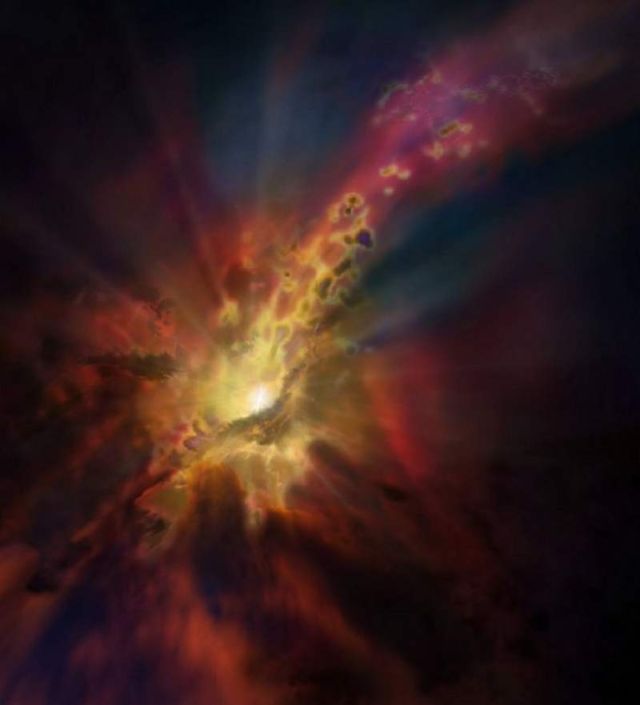
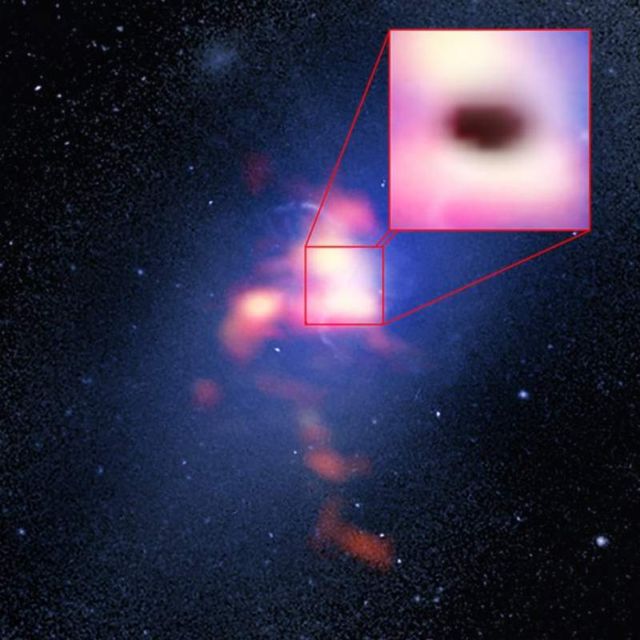
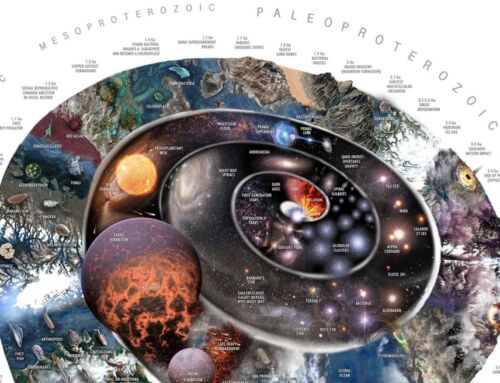
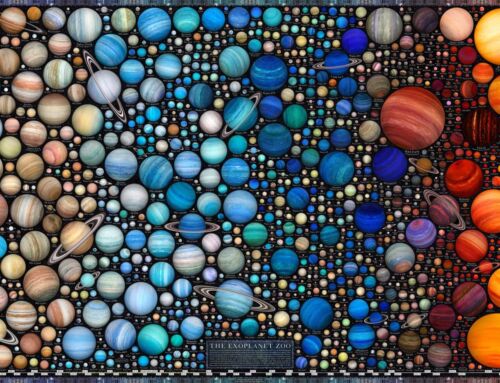
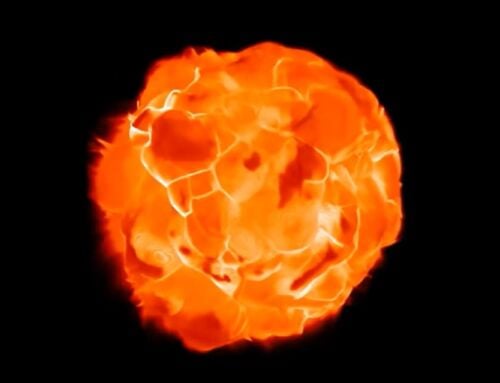
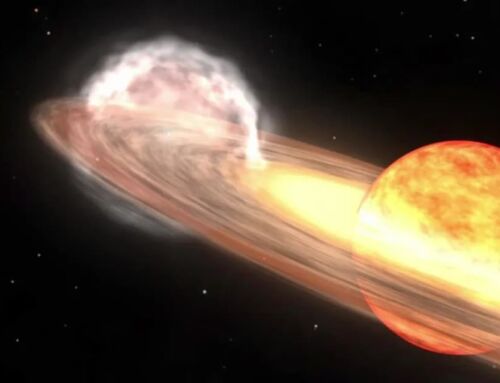
Leave A Comment